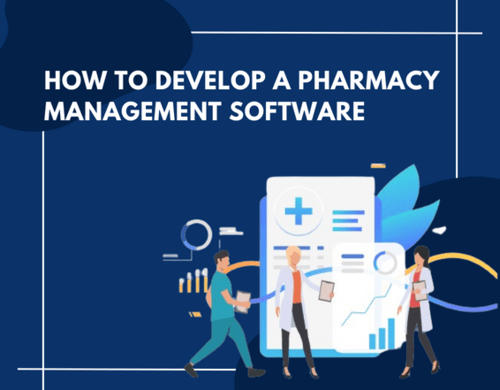How to Develop a Pharmacy Management Software
In Today's World the healthcare sector and an ever-increasing number of medical providers, there are two quick conclusions we can come to. First, there will be more opportunities to care for one’s health. Second, pharmacy management software development services will become highly popular as pharmacies need an effective management system to help the pharmacists on-site and enable online management. This blog post aims to provide a comprehensive guide on how to embark on the journey of creating Pharmacy Management Software

Here is the 10 ways of how to develop a pharmacy software
Define Objectives and Scope
The objectives and scope of your Pharmacy Management Software. Identify the specific features and functionalities required, such as inventory management, prescription tracking, and patient data management. The totality of outputs, outcomes and benefits and the work required to produce them. Objectives: Predetermined results towards which effort is directed. Objectives may be defined in terms of outputs, outcomes and/or benefits.

Regulatory Compliance
The regulations and standards governing pharmacy operations in your region. Ensure that your software complies with requirements such as Health Insurance Portability and Accountability Act (HIPAA) for patient data protection.

User Interface (UI) and User Experience (UX)
A user-friendly interface that simplifies navigation for pharmacy staff. A well-designed UX enhances efficiency and reduces the learning curve for users.

Integration with External Systems
Integrating your Pharmacy Management Software with external systems, such as electronic health records (EHRs) and billing systems, to streamline workflows and enhance interoperability.

Barcode Scanning and RFID Technology
Barcode scanning and RFID technology to improve accuracy in inventory management, prescription dispensing, and patient identification.

Security Measures
The security of sensitive data within the software. Implement encryption protocols, secure authentication methods, and regular security audits to safeguard patient information.
Automated Alerts and Reminders
Automated alerts for prescription refills, drug interactions, and expiration dates. This feature helps in providing timely information to both pharmacists and patients.
Reporting and Analytics
Develop a robust reporting module that enables pharmacy staff to generate detailed reports on sales, inventory turnover, and other key metrics. Analytics tools can aid in decision-making and optimization of operations.
Cloud-Based Accessibility
Cloud-based Pharmacy Management Software to ensure accessibility from various locations, facilitate remote work, and enhance scalability.
Training and Support
Training for pharmacy staff on how to use the software effectively. Additionally, establish a reliable support system to address any issues promptly.
Conclusion
Developing Pharmacy Management Software requires a meticulous approach, considering the unique needs of the pharmaceutical industry. By focusing on regulatory compliance, user experience, security, and innovative features, you can create a robust software solution that not only streamlines pharmacy operations but also contributes to improved patient care. Embrace the technological evolution in healthcare and embark on the journey of developing a cutting-edge Pharmacy Management Software that stands at the forefront of the industry.